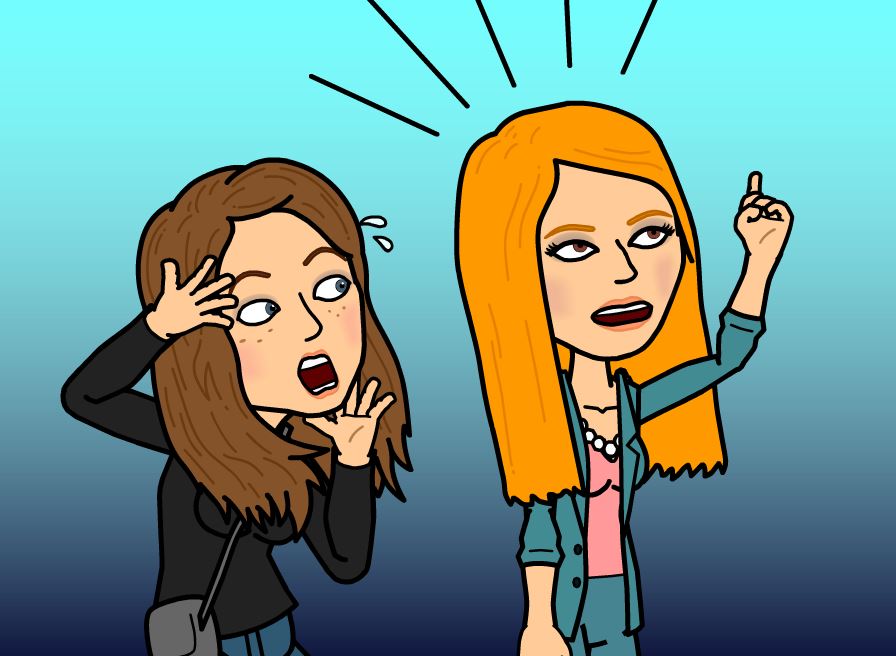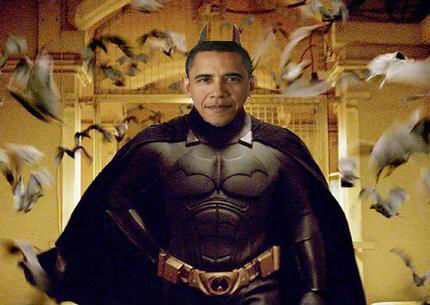
Author: mdry
Playing with a few ideas…
So I played around with a few of the suggested Web 2.o tools for teachers.
The first is a warning sign from www.warningsigngenerator.com and the second is a Bitstrips Comic. The comic would be a lot of fun for students to show an idea or interpretation of something in a single frame. It was also a lot of fun to create the avatars… The comic is entitled (and I didn’t make this up, it was one of the options of the site) “Melissa and Brendan make poetry with their bodies”. Enjoy!
I’m Barack-Man
On the fence…
This week’s reading is a challenging one for me. I wrote my Admission Essay for this program on the negative effects of txt in classrooms. I have always been someone who believes very strongly that it is having a negative influence on today’s youth. I can say this because I notice it having an effect on me and I was 15 when I starting using instant messaging and 18 when I started to send text messages. Those are relatively late ages compared to children today.
That being said, I have become much more open minded the past few months about a lot of things. This stems a lot from this class. I never would have read a graphic novel or discussed technology as a necessity in a high school class before this course. Thus, I find myself a bit on the fence. I agree with the basic idea discussed in both articles of txt and IM as a kind of teenage lingo that is an expression of themselves. I also think it is unfair to label people who send txts or use txt shorthand as one group because most people these days sending txt messages and using common abbreviations.
What really struck me in the first article was the way it discussed switching between txt language and formal writing. It mentioned that it is the role of teachers to reinforce this. I think that is asking a lot. I find that this generation isn’t very good at understanding this kind of shift. This came up on my practicum. Teachers were discussing the kind of language that they hear in the hallways and the amount of swearing that happens. We discussed the way that we switch our language between how we talk with our friends when we are having a drink, to how we talk at a family dinner, to how we talk at school. It is a concern that many young people these days don’t seem to understand the concept of changing your discourse for your surroundings. They seem to think that they can talk however they want, whenever they want. I think the same goes for writing. When I was volunteering last year, I saw an alarming amount of written assignments containing things like “”bcuz” and “lol”.
I think this means that it is more important than ever that teachers reinforce proper writing because of this but I do think there is an increase in the loss of formal written language and I don’t think that we as english teachers can handle all of this ourselves. Unfortuantely, with so many students in Canada being from immigrant homes, we also can’t rely on parental support when it comes to teaching proper writing. I guess my concluding thoughts on the topic would be that we as teachers (and as parents if we are parents) need to constantly reinforce that there are different discourses for different aspects of life (When we speak casually, when we write formally, etc) and a very important life skill is recognizing what to use when.
Where your cupcakes came from :)

A new spin on an old classic…
I have to say that I really enjoyed the article this week. I am not really into biology…. I have a lot of friends in the sciences and I just don’t get it. However, relating biology to books and movies, that gets my attention. My mind was turning as I read the article and thought at the same time about the activity for class this week. What would I bring? What would I choose? Especially since the article got me thinking about some adaptations in a way I had never thought about them before. Relating the adaptation of text to biology made it suddenly seem so clear that adaptations of literature should be more about how the adaptation stands on its own and less about how it compares to its “roots”.
I am a bit of a movie buff so I went to my shelves to see just how many of my collection started out as books, or tv shows, or are even an adaptation of another movie. It was shocking to realize just how many of them were adpatations… and that is only the obvious ones! I didn’t look them all up. I am sure there are more!
I got thinking about my all time favourite book, Little Women by Louise May Alcott. I will talk more about this in class this week but for now, I had an idea. I wanted to compare a scene from the book to a scene from the original 1939 screen adaptation. I choose the party scene towards the beginning of the novel and read them both. They are so drastically different! I decided to put the texts into wordle to see how they would display. It was tricky because with the screenplay I had to choose to include the names of the characters that label their lines, or not. I choose to remove them and just stick to the dialogue.
And this is the screenplay adaptation:
I’ll leave it at that for now. Excited to discuss this topic in class.
-Melissa 🙂
(Sorry, I am tech challenged and couldn’t get the wordles to be any bigger! I tried!!)
So cute!
So I was watching TV last night and I saw this add and I had to share it. I haven’t had time to analyze it specifically in relation to the article we read, but I also couldn’t get it out of my mind and needed to share it.
I am not sure what visual media techniques it employs beyond using an adorable hedgehog. I will look into that before Wednesday. To be honest, I don’t even care what it is about… I just love it! I am not sure if that means they were successful because I won’t forget it… or unsuccessful because the star of the commercial outshines what it is supposed to be advertising. Either way, I am looking forward to discussions about this kind of stuff on Wednesday!
Fluzone commercial featuring an adorable Hedgehog by pfyrestorm
Melissa
Better late than never!
Sorry guys. I know this is past deadline but I wanted to post about my experience anyways.
I had never read a Graphic Novel before, and to be honest, I was not interested. I have never been interested in comics, video games, ereaders. I could probably be called a “lit snob”. I was all about novels, poetry, and film. I had nothing against other forms of literature for other people, I just personally wasn’t interesting in them myself. I can definitely say that I have changed my mind.
Like Sarah and Katie, I also read American Born Chinese by Gene Luen Yang. I couldn’t put it down! I was hooked from the first page. I must say, though… I had a TERRIBLY hard time looking at the pictures. I just wanted to read the words. I was so interested in what was going to happen and since I always read books that are strictly text, that was the way I knew to find out what was happening. I had to force myself to look at the pictures. Even still, I want to go back and read the entire thing again. I am sure there are some pictures that I entirely skipped over! This was definitely an eye-opener. I am sure most of my students will not have this problem! Something to be aware of.
That being said, I thought it was an amazing book. Sarah and Katie have already touched on a lot of the major issues that the novel addresses so I will try not to be too repetitive. I found the message about accepting who you are to be such an important one. Even as an adult, I sometimes struggle to be myself and not what I think someone else wants me to be. As much life experience as I gain, I am not sure if that is something I will ever outgrow completely. I would LOVE to teach this in high school. It was such a quick easy read and super relate-able. As a white, Christian woman, I wasn’t sure how much I would relate to a story about a young Chinese-American boy. There are, however, allusions to the Christian faith that made me feel super connected to the story. There were a lot of powerful messages and allusions that I feel made it so pretty much anyone could read and connect to it.
I am very happy to have lost my graphic novel virginity. I can’t wait to read more and find ways to bring them into my classroom.
I spent an hour on Flickr and could not find a single image that inspired me so I decided to use a personal image (I hope that is alright). This is a photo taken of my daughter in June. She was just shy of 9 months and yes, she is demonstrating that she knows exactly how a television remote works.
I have spent years watching my nephew become addicted to technology. I always said that when I had children, there would be a restriction on the amount of technology introduced to them. While I recognize that we are in a digital age and technology is everywhere, I was always determined that my child would have the same upbringing I did: playing in the cul-du-sac, games of hide and seek, drawing hop scotch with my sidewalk chalk, creating my own musicals to perform for neighbours, etc. And yet, at 11 months old, my daughter knows how to guide her finger over my iPhone and point a remote at the television DESPITE my best efforts to limit her exposure to these things.
Becoming a parent has really changed my perspective on technology and how much we can control its role in the lives of our own children and the children we teach. It has also brought to light, as has been mentioned by others, just how behind I will be technologically compared to my students despite growing up myself with access to computers and internet for most of my childhood. My daughter has changed a lot about me over the past year but specifically, she has changed the way I think about education, and consequently, the role technology has in education. I am now finding a middle ground where I am excited for the opportunities that the new technologies present while also being passionate about the relevance of my less high-tech upbringing. I will go out on a limb and state that I fear some parents rely on technology in place of their own time evidenced by how much children watch television, how much they play video games, reading social networking sites instead of books, etc. We will be seeing the effects of this in our classrooms. I am interested in the ways we as teachers will provide our students with the most positive aspects that technology has to offer while combating the negative effects such as reliability on spell check, addiction to cell phones, etc.
That being said, I have a LOT to learn about how we can use technology positively in our classrooms and I am excited to do so in this class.






